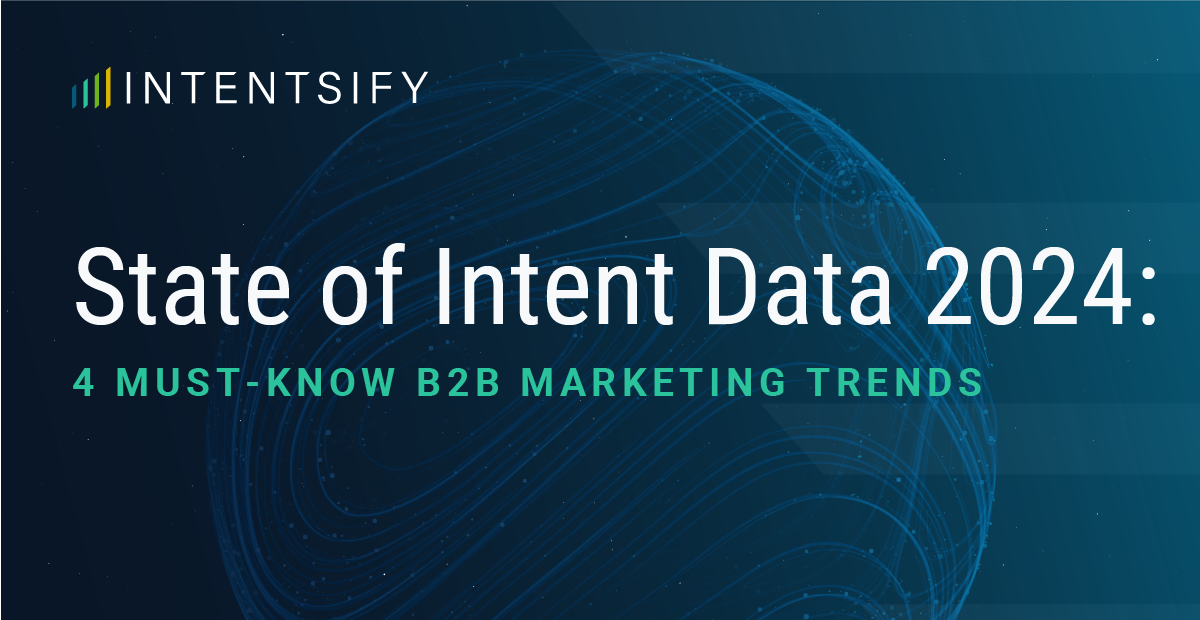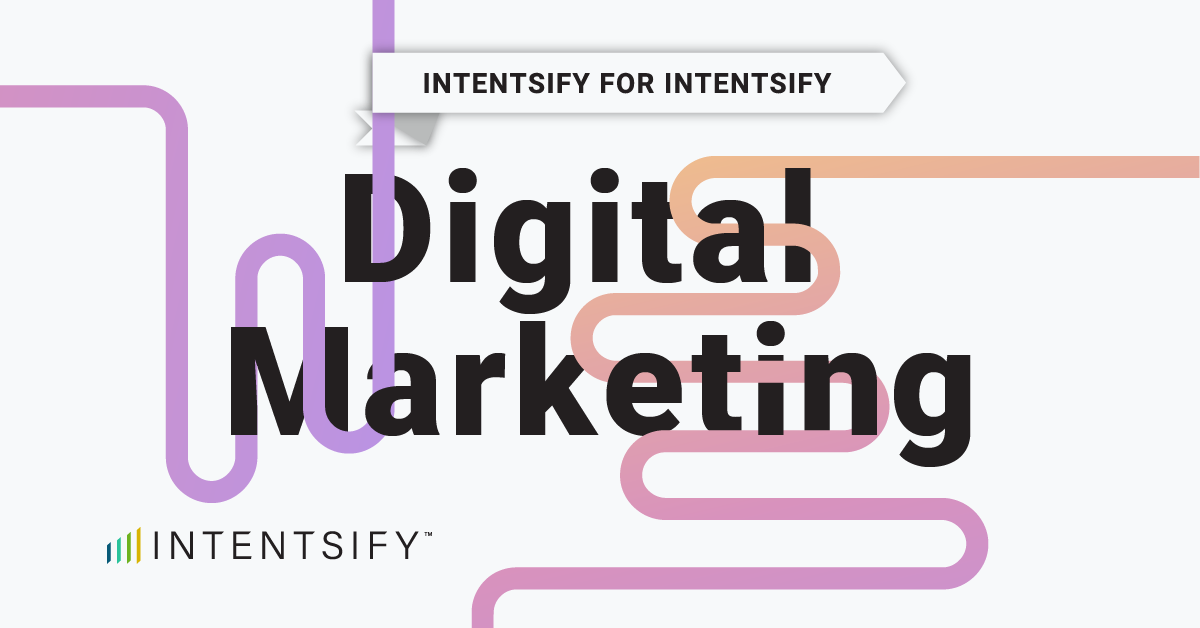A Q&A with Marco Lagi, Vice President of Artificial Intelligence, Intentsify
ChatGPT has taken the world by storm. Consumers use it as a personal assistant for help with everyday tasks like setting reminders, making reservations, providing simple explanations for complex topics, and offering personalized recommendations. Businesses also leverage ChatGPT to enhance their existing technologies, introduce new revenue streams, and improve their go-to-market (GTM) strategies. But is it just a fad, or is ChatGPT here to stay? What are the key considerations for B2B organizations when leveraging this type of technology? And what does the future hold for AI and other large language models?
In this informative Q&A with Marco Lagi, Intentsify’s vice president of artificial intelligence, Marco weighs in on the reasons behind all the excitement, ChatGPT’s potential impact on B2B sales and marketing teams, and where AI technology is headed next. Read on to learn more about this exciting topic!
Why do you think the media is so captivated by ChatGPT right now, and is it here to stay?
Large language models like ChatGPT have demonstrated an uncanny ability to generate coherent responses to a wide variety of prompts, from “Pretend you’re Mike Tyson and write a rhyming poem” to “How to aggregate data in Excel”. And that’s where I think the intense interest of the public (and therefore the media) comes from: the realization that, beyond the hype, these systems could actually be useful for their day to day. It’s a peek at what our lives will look like in the near future. AI experts are captivated as well (not an easy feat) because they still haven’t found an upper limit on what these models can do. Make them bigger, train them with more data, spend more money and electricity, and they’ll get even better.
Of course, all that glitters is not gold. The reasoning ability of these large language models is still lacking, and they won’t be able to complete a task if they haven’t seen something similar during their training.
ChatGPT is both a fad and here to stay. It’s a fad because many companies will be built around it, and most of them will fail. But it’s here to stay because the few that succeed will have found a valuable niche for generative AI, which will expand over time as these models improve their reasoning and abilities.
In your opinion, what are the biggest impacts (positive or negative) of using AI tech like ChatGPT—particularly for GTM teams?
The biggest positive impact I see is that we’ll collectively spend less time moving emails to the junk folder or hanging up on cold calls. Messages will be more relevant and engaging to the receiver, and considerable time and resources will be saved on both ends. I’m not referring to the “Chat” part here (i.e., the iterative back and forth) of “ChatGPT,” just the “GPT” part (i.e., the text generation). While the interactivity of the conversation might improve things further, we’re not at a point just yet where we can unleash these models in the wild without supervision. And the feeling of interacting with a “fake human” might turn people off more.
On the other hand, the most worrisome aspect of models like ChatGPT is their lack of awareness when it comes to low confidence statements. They will express the most ridiculous nonsense as objective facts. GTM teams will still need to take anything that comes out of these models with a gigantic grain of salt and go through their outputs with a fine-tooth comb before putting them to use. Apparently, saying, “I don’t know” is still a human prerogative for now. When I asked ChatGPT, “Why do you sound so confident when you’re wrong?” its response was: “I do not have emotions and therefore cannot sound confident.” Case in point.
Do you think AI and the Metaverse will be combined in the future? If yes, how? If not, why not?
Yes, it’s very likely. The biggest AI advances in recent years have come from what’s called “generative AI,” i.e., large neural networks that are able to generate text, images, and sound (sometimes combining these modes) with realistic coherence and resolution. A plethora of websites called “This X Does Not Exist” like This Person Does Not Exist, This Resume Does Not Exist, or even This Graffiti Does Not Exist have blossomed all around the web. Everyone now has access to a virtually infinite amount of parallel universes, where all these things, in fact, do exist. In his short story “The Library of Babel,” Jorge Luis Borges imagines a humongous library containing all possible books that could have been written. And we now have the keys to that library.
This ability to dream alternate universes ties well with virtual reality and procedurally generated worlds in general. ChatGPT, or similar large models, could be used to generate the thoughts and words of virtual characters, while other algorithms could take care of generating the rest of the Metaverse. In fact, one could go as far to say that without models like these, virtual avatars wouldn’t be convincing enough to create an immersive experience. And they might even be the reason for a rise in the Metaverse’s user base, by helping make it feel more inhabited and overcome the chicken and egg problem of user adoption.
These characters could help the user navigate the virtual world, they could help companies increase their brand awareness without increasing labor costs, and they could help create more engaging and personalized dialogues in games, virtual events, and social activities. The models powering these characters could be fine-tuned using feedback from the user to maximize their satisfaction. Have you ever dreamed of having a beer with your favorite actor or philosopher? Have you ever wanted a personal coach to push you toward a better version of yourself? Or a virtual executive assistant to help you keep track of all the things you need to do in your life? Or just a friendly face to talk to? Or maybe to learn kung fu? To be clear, we’re not there just yet. But as both the Metaverse and large natural language processing (NLP) models mature and evolve over time, experiences like these won’t be out of reach in just a few years. And it will be increasingly hard to come back to the real world.
What do you think is next for AI in the marketing and sales enablement space?
Sales and marketing are, at their very core, based on communication. And there are at least two main ways AI can help communicate in this space. First, AI can help by automating messaging personalization. The first and most obvious step is to generate fairly generic one-way communication content (blog posts, sales scripts, websites, collateral, or email templates). This is already possible, and sales and marketing professionals are starting to use these tools to their advantage. But when we get to a point where these machine learning models can be fine-tuned cheaply on specific data, they will be able to generate text that is extremely tailored to the specific use case. Imagine being able to point the model toward a corpus of text written by a prospect (emails, social media posts, blogs) and have it come up with the most effective content and style to grab that person’s attention—at scale.
To be clear, we’re not there yet. But a second way AI can help people communicate better is by providing more relevant context and better timing for their conversations. The same technology that powers ChatGPT (large neural networks based on the Transformer architecture) is used at Intentsify today to inform sales and marketing teams about what their prospects are in the market for. By analyzing your prospects’ browsing behaviors, we’re able to surface the ones that most closely match the value proposition of your product. This detailed level of understanding of the buyer’s intent can only be achieved with AI developed over the last three to four years. It is an exciting time to be in this space.
Any last thoughts?
Clearly, the potential use cases and benefits of ChatGPT and similar AI technologies are endless. Beyond understanding prospects’ research behavior and journey stage, AI can also be used to identify potential customer churn risk, guide target account list (TAL) development, gauge how well your competitors’ messaging is resonating with potential buyers, and more.
B2B organizations looking to improve their efficiency should explore where AI fits into their go-to-market strategies, prioritize their top use cases, and implement an iterative process to continue monitoring and improving its impact over time.
To learn more about how Intentsify is leveraging large language models to deliver the most accurate and comprehensive buyer-intent intelligence in the market, as well as revolutionizing the way marketing and sales teams monitor and engage with their accounts, contact us.






